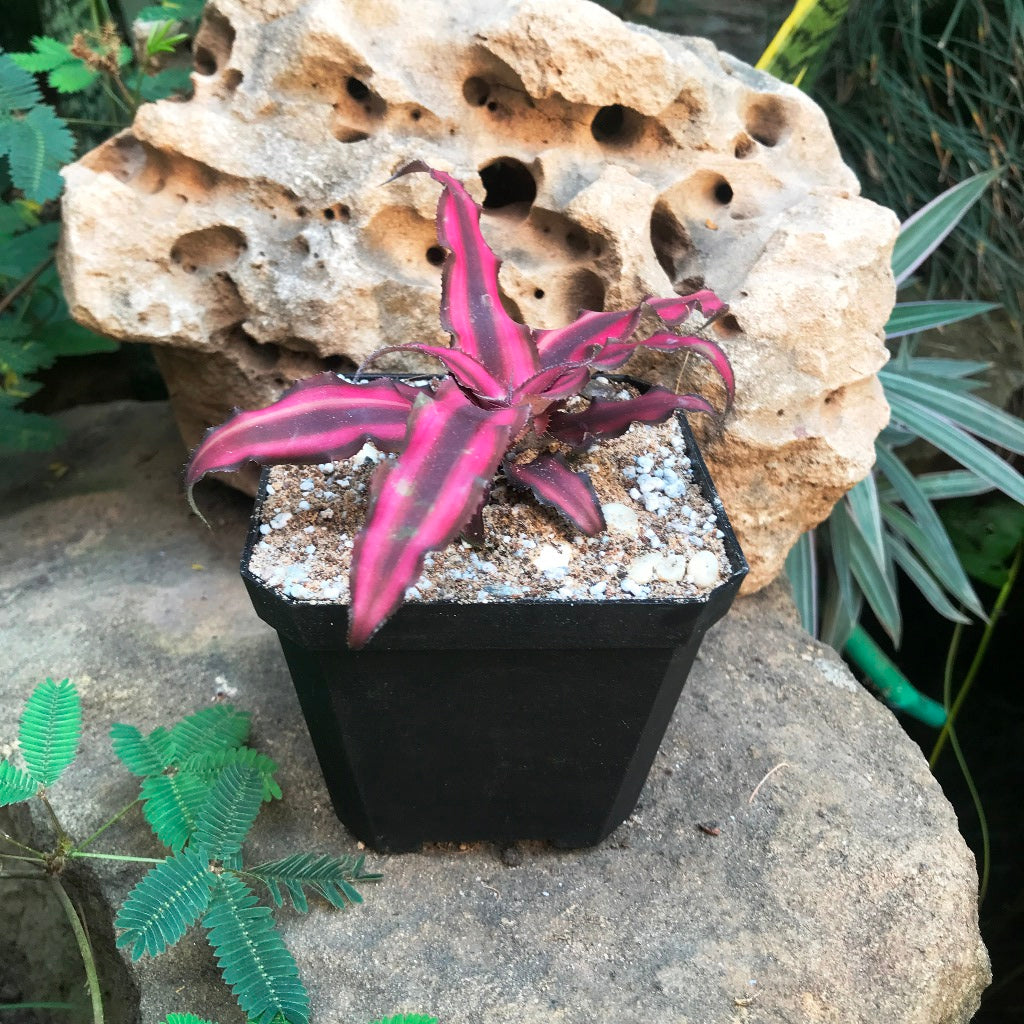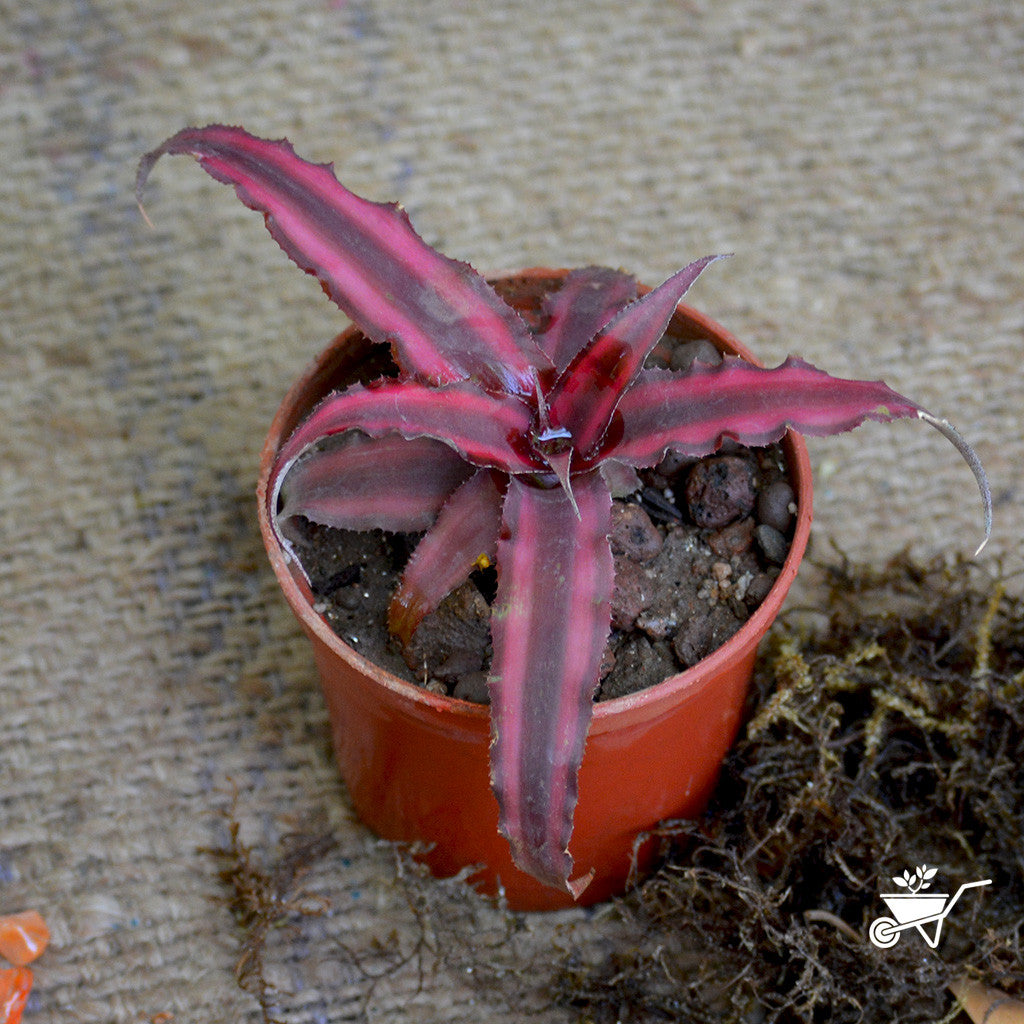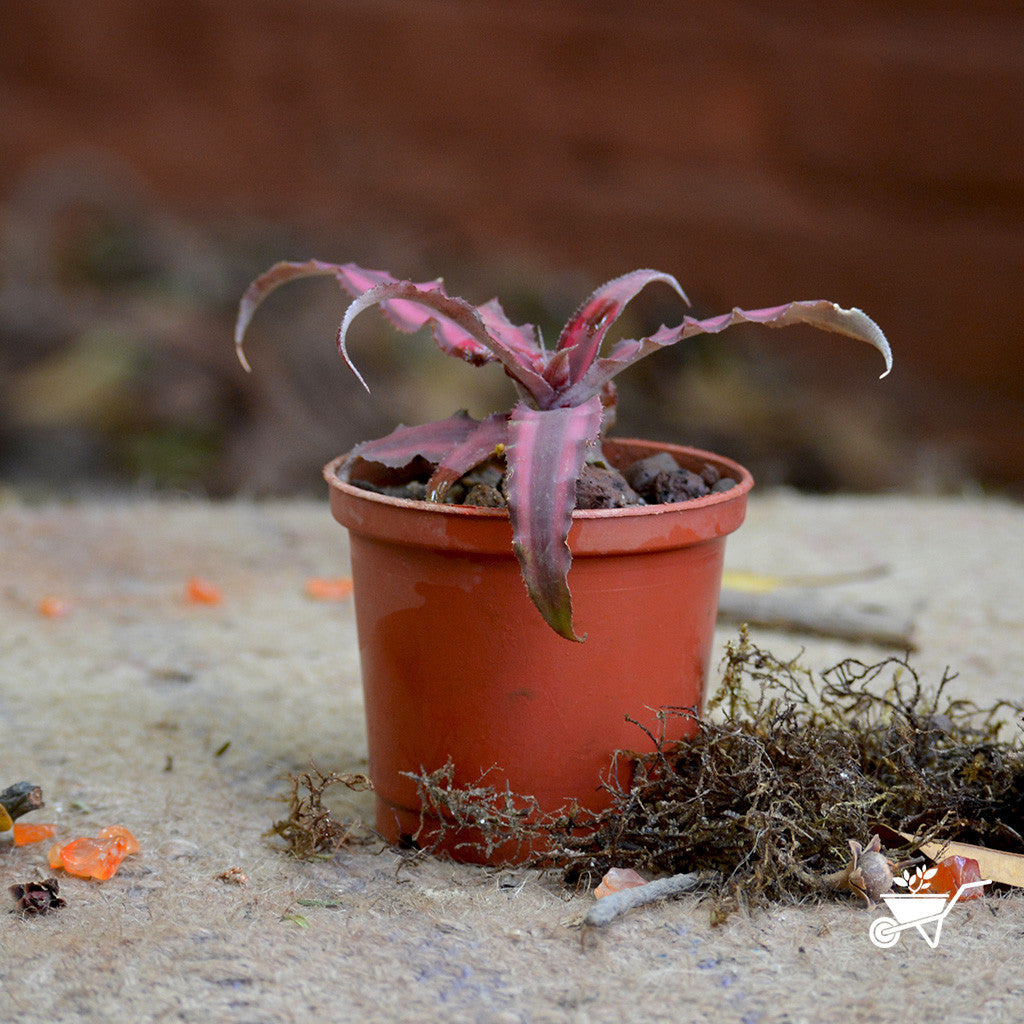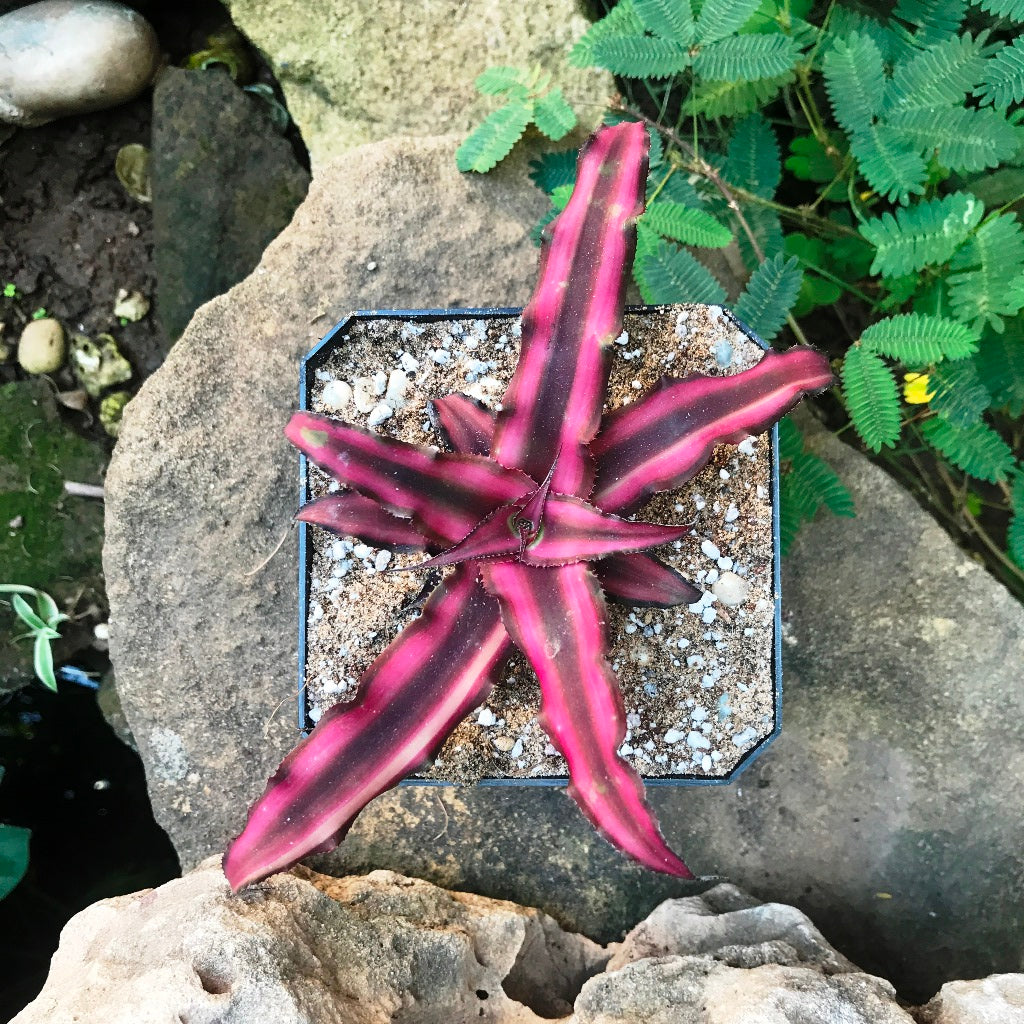Cryptanthus bivittatus-Red Star
Family
Bromeliaceae
Origin
Brazil
Description
Cryptanthus bivittatus is one of the most popularly grown species of the genus Cryptanthus. It rapidly forms clusters of small, upright growths with wavy black and pink leaves. Compared to other Cryptanthus, C. bivittatus 'Red Star' is a moderate to slow growing plant but it will develop clumps over time that should be divided as they grow more dense.
Cryptanthus are more commonly known as Earth Stars, a name they received because of the shape of their foliage. Earth star bromeliads are unique in that they only grow terrestrially as opposed to many other bromeliads that can grow mounted on a substrate. Most Cryptanthus grow close to the ground and can be as small as three inches in height.
Environment
Bright, diffused light (not direct sun) is needed to bring out maximum color in most Cryptanthus. Too little light and the wonderful colors and patterns will fail to develop; too much light causes bleaching of color and sunburn. Patio areas lit by morning or afternoon sun and office settings with florescent lighting are good locations.
A moist environment is appreciated: if you have some space in your bathroom, kitchen or even a greenhouse, it will be much easier to provide moisture this plant needs.
Earth star Bromeliads prefer to be kept relatively moist. However, care should still be taken to avoid overwatering them - they do rot when water is allowed to stand in the container for too long!
Use a mix that holds more moisture than the standard mix, but it still must be well drained. One such creative mix is 4 parts Coco peat, 1 part vermiculite, 1 part perlite, 1 part clay aggregate, 1 part composted cow manure.
A slow-release fertilizer combined in the potting mix is recommended. Beware of copper and boron that are toxic to bromeliads. Your fertilizer should have none or no more than trace amounts of these micro-nutrients
Landscape Use
Suitable for Container, Terrariums






















